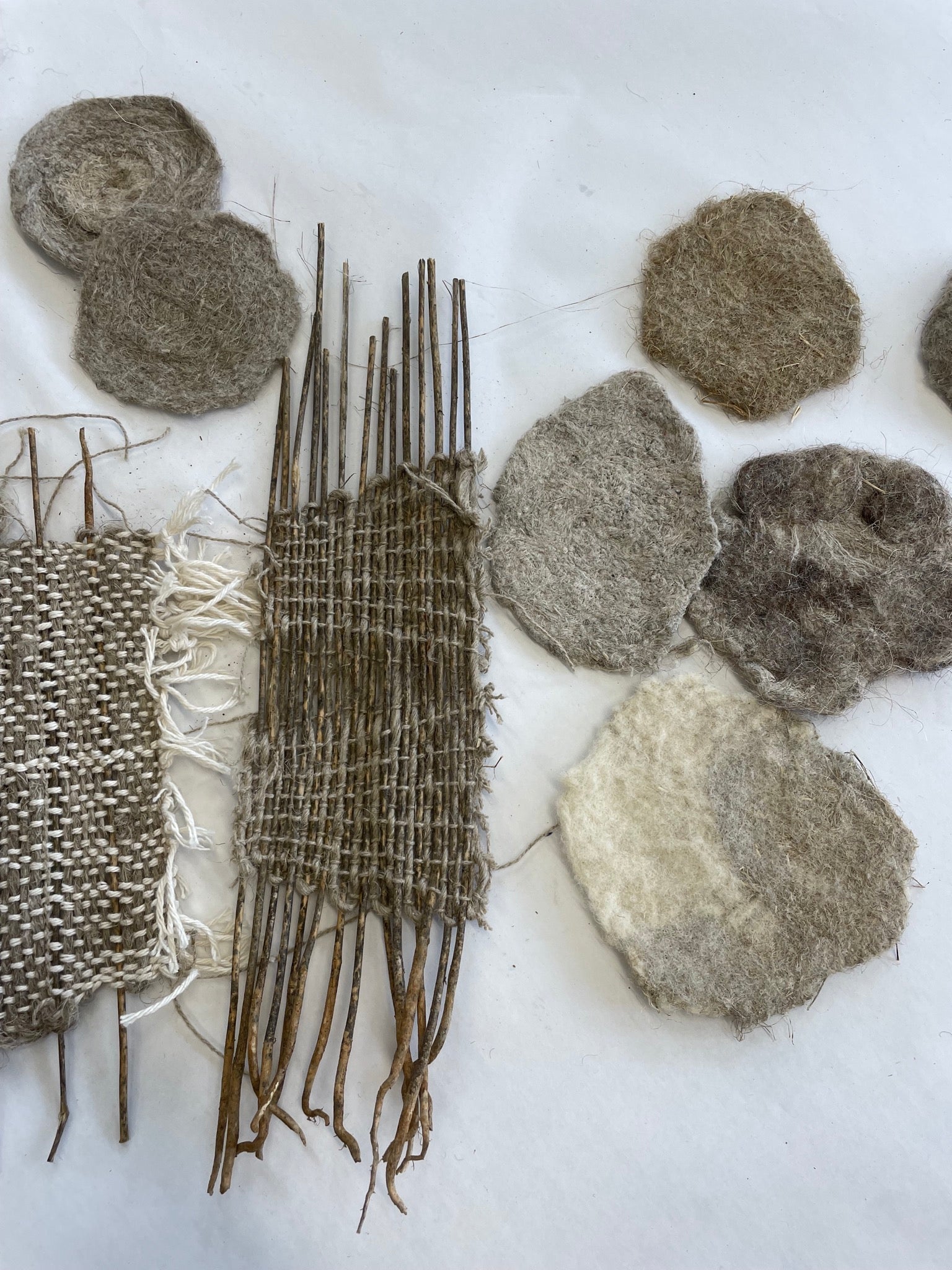From Flax to Linen - A Journey Shared at Edinburgh College of Art
I was lucky enough to be invited to Edinburgh College of Art over the Easter break just before the students handed in their work for the term.
As I stepped into the Textile department it took me back to my days at uni. The smells and the feelings were just the same and as I watched the 3rd year students working away on their projects I realised just how much time had passed since I was that age with my whole career ahead of me.

I was asked by Niki Taylor - lecturer and all round amazing human to come and talk to the textile students about my journey from their position in uni nearly 20 years ago to now running my own sustainable fashion business.
I met Niki just as I was starting out my business, at that time she was running Fashion Revolution Scotland a not for profit group sharing and promoting a "global fashion industry that conserves and restores the environment and values people over growth and profit."
As I began my talk, I was really nervous but the eager faces soon helped me relax into the slides I had prepared for the talk.
I took them through my story of working for the fast fashion industry as a designer through to how I found myself running LAW today.
But what truly ignited our conversation was the connection we found in our shared passion for textiles.
The students were immersed in a project centered around flax, a plant with a rich history deeply rooted in textile traditions. I learned as much from them that day as I hope the learned from me.
They explained to me the meticulous process they were undertaking, carefully and slowly processing the fibres from the flax plant to a finished woven fabric on the loom.
They received the stalks of flax, already soaked and ready for the next stage. Traditional methods involve laying the flax out in fields to soak, allowing nature to work its magic over time. However, modern techniques have streamlined this process, utilising machinery to speed up the retting process without compromising quality.


Once retted, the flax fibres are dried and then broken to remove the woody outer layer, leaving behind the coveted bast fibres. These fibres are then carefully combed and aligned, ready to be spun into yarn. The spinning process can be done by hand or using spinning machines, each method imbuing the yarn with its own unique character and texture. You can see from the students images just how different these look.

Each of the spun yarns were different. They also experimented with natural dyes to give the finished spun yarn a different appearance.

As the students shared their insights and experiences, I couldn't help but be inspired by their dedication to preserving and evolving textile traditions. Most of them shared that they really enjoyed the slow spinning stage as it made them realise just how much work goes into creating a fabric.


The creations were beautiful, equally as interesting and all completely different.

The image above shows the student experimenting with resin and seeds to make buttons.
Below is an image where a student has used the waste from the carding stage to needle felt a linen fabric and the results are beautiful.

Our conversation bridged the gap between past and present, reminding me that innovation thrives when rooted in a deep respect for tradition.
Leaving Edinburgh College of Art that day, I carried with me a renewed appreciation for the artistry and craftsmanship that goes into every textile we create. And as the students continue their journey with flax, I have no doubt that they will weave their own stories of passion, creativity, and innovation into the fabric of the future.
To follow the students and their creations you will find them at
https://www.instagram.com/_slow_ed/?hl=en
https://www.instagram.com/ecatextilesdepartment/?hl=en

0 comments